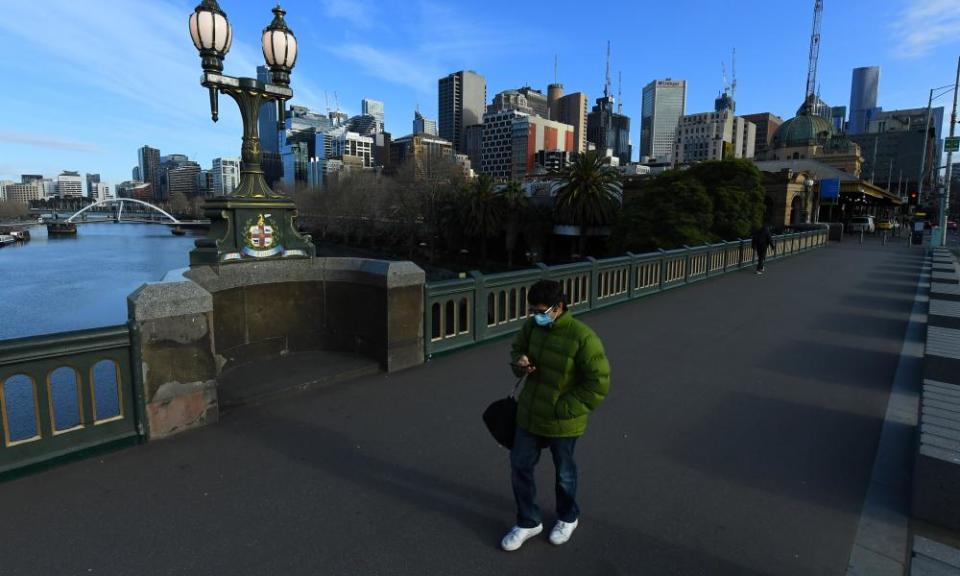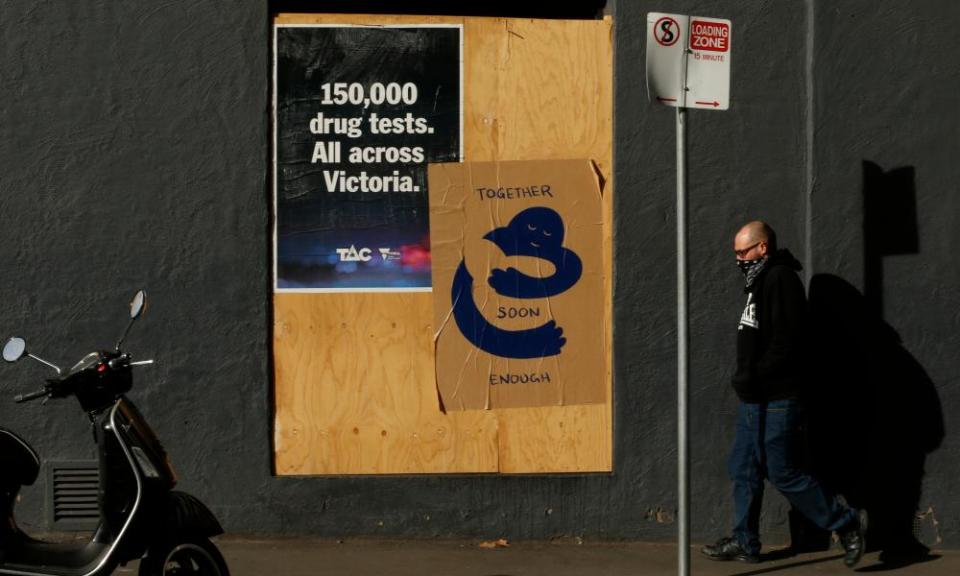'They didn't close the deal': New Zealand looks on in horror at Melbourne Covid-19 crisis
Weeks ago they were praised globally as two countries acting in tandem to eliminate the spread of Covid-19. But on Monday, New Zealanders watched in horror as some of their neighbours across the Tasman Sea began their strictest period of Covid-19 lockdown yet after a resurgence of cases – while their own country continued to record good news in the fight against the virus.
It is approaching 100 days since the last “mystery” case of the coronavirus – meaning an infection transmitted locally from an unknown source – was diagnosed in New Zealand, and apart from strict border measures life has been back to normal since early June, following one of the world’s strictest lockdowns beginning in late March. There are 27 confirmed cases of the virus in the country, all of them confined in quarantine facilities, and 22 people have died since the pandemic began.
It’s a far cry from the situation in the Australian state of Victoria, where the discovery of hundreds of cases a day prompted bolstered lockdown measures on Sunday, with rules almost as strict as New Zealand’s own stringent shutdown.

On Monday, New Zealand news outlets carried wall-to-wall coverage of Victoria’s new restrictions – with the news generating relief, anxiety, and the feeling of having dodged a bullet.
It also showed the smaller nation’s stricter measures had worked, analysts said.
“The Australian lockdowns were effective but not as tight as New Zealand and ultimately the weakness was that they didn’t close the deal so to speak, they didn’t finish it off,” said Rodney Jones, an economist and principal at Wigram Capital Advisors who has provided Covid-19 modelling to the New Zealand government.
Victoria’s woes have spelled a “major setback” for the prospect of a trans-Tasman travel “bubble” between the two closely-linked countries, Jacinda Ardern, New Zealand’s prime minister, said on Monday. Such an arrangement would have discarded the requirement for travellers between New Zealand and Australia to spend time in quarantine at either end, a prospect that in May sounded workable but and now seems a remote possibility.
“We have always said we have to be very, very assured that any quarantine free travel we have with any country needs to ensure that it doesn’t come at a risk or a cost to us,” Ardern told Radio New Zealand. “And so obviously this is going to be some time away now.

In late March, Ardern announced a national shutdown of the country when New Zealand had only recorded just over 200 cases of Covid-19. Unlike in Victoria, even takeaway food and visits to intimate partners were off-limits – measures her detractors said were too high a price to pay. Opposition MPs decried their inability to purchase coffees and haircuts as Australians could.
“We don’t know yet the balance that you can have between Covid in your society that’s not eliminated, and economic activity,” Jones said. Apple’s mobility data – showing how people travelled around cities – showed much more movement in Victoria than New Zealand during April, he said, and the explosion of cases in Victoria since was “one of the arguments for the elimination strategy.”
“That’s why New South Wales is still at risk,” he added, pointing to the handful of cases in the community there.
But the situation in Australia was also a wakeup call for New Zealand, epidemiologists said. For Kiwis, all restrictions have lifted on everyday life, and the country’s virus-free status is entirely reliant on strict border controls for returning travellers – an area where Victoria has been plagued by mistakes.
“It’s a huge reminder for New Zealand of the fact that it could be us in just a few days if we have a breach of our biosecurity,” said Michael Baker, a professor at the University of Otago.
Related: New Zealand and Cook Islands work on 'travel bridge' to beat tourism slump
He urged Australia’s leaders to agree to whole-heartedly pursue elimination as a strategy, as Ardern in New Zealand had done.
“Even Scott Morrison has said, ‘We’re not doing elimination, we just want to stop every community transmission of the virus,’” said Baker. “Words actually do matter when you’re trying to unify all your states around a goal, and the effort that they’re putting into this in Victoria and New South Wales suggests that they’re absolutely pursuing elimination as a goal … So why don’t they say that’s what they’re doing?”
New Zealand’s lockdown rules had been so strict and so clearly communicated that rule-breaking had been easily apparent, he added, urging the leaders of Victoria and New South Wales to “give limited opportunity” for the virus to spread – which should include barring delivery meals, which were banned during New Zealand’s lockdown.
“It’s almost certain to succeed if the population adheres to it,” Baker said.
Jones, the economist, agreed. Despite Australia’s higher number of cases at the time that the two countries locked down, he said, that nation could have achieved the same outcome New Zealand had – if its lockdown had been stricter.
Ardern was not gloating about her country’s success when she said on Monday that she had not spoken recently to Daniel Andrews, the premier of Victoria.
“Those in Australia that we’ve had contact with do certainly know that we are available at any point to talk through all lessons learned,” she told RNZ. “Because we’ve all learnt them and we’re all still learning.”

